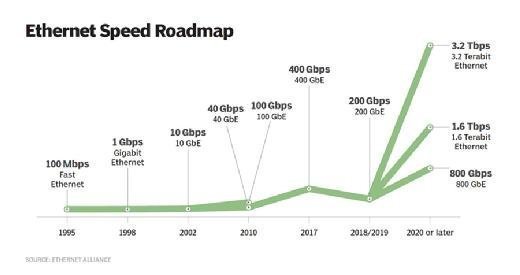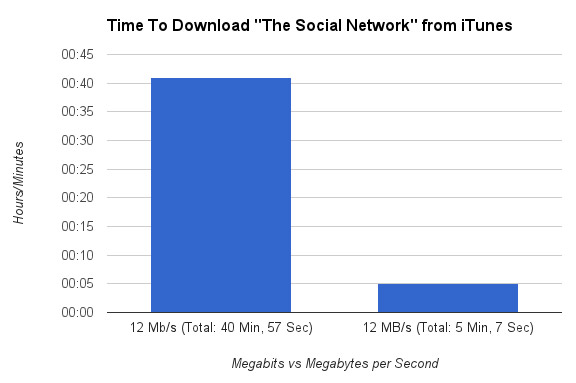The Duty of Megabits Per Second in Online Gaming Efficiency
The Duty of Megabits Per Second in Online Gaming Efficiency
Blog Article
How Megabits Per Second Effect Your Online Activities
The concept of megabits per second (Mbps) plays an essential role in shaping our on-line experiences. Greater Mbps can boost efficiency and decrease disturbances, while poor rates may promote stress and inefficiency.
Understanding Megabits Per Second
When thinking about web speed, it's essential to comprehend the concept of megabits per second (Mbps), which works as a common measurement for information transfer prices. This statistics quantifies exactly how much data can be transmitted over a net link in one second, supplying a clear understanding of performance capabilities - Megabits Per Second. For context, one megabit amounts to one million bits, and Mbps is generally utilized to express transmission capacity for different on the internet tasks
A greater Mbps shows a quicker internet connection, enabling customers to perform tasks such as downloading files, browsing internet sites, and engaging in online gaming a lot more efficiently. Typical surfing requires around 1-5 Mbps, while streaming high-def video clip may require 5-25 Mbps. Understanding these needs is critical for figuring out the proper net speed required for specific tasks.
In addition, the variety of gadgets linked to a network can impact overall performance. Numerous customers streaming, pc gaming, or downloading concurrently can stress offered data transfer, resulting in slower rates - Megabits Per Second. Examining personal online behaviors and requirements is crucial in choosing a net plan that aligns with one's requirements, ensuring a seamless digital experience
Streaming and Buffering Issues
Streaming high-definition content has come to be a staple of modern-day on the internet enjoyment, yet it is often accompanied by annoying buffering concerns. These interruptions can substantially interfere with the viewing experience, resulting in frustration and prospective loss of audience involvement. Buffering happens when the data sent from the streaming solution is not obtained swiftly sufficient to keep a smooth playback, often due to insufficient net rate determined in megabits per second (Mbps)

Additionally, real-time streaming can be impacted by network blockage, which takes place when numerous tools share the very same data transfer. Subsequently, enhancing connection speed and making sure appropriate Mbps is necessary for a seamless streaming experience. As streaming solutions proceed to develop, recognizing the influence of Mbps on buffering issues stays vital for consumers looking for nonstop enjoyment.
Online Video Gaming Performance
The effect of internet rate on online tasks prolongs past streaming, significantly affecting on-line gaming performance. In affordable gaming, reduced latency and high data transfer are important for a seamless experience. A fast connection minimizes lag, permitting gamers to respond quickly to in-game occasions, which can be the difference between victory and loss.
Transmission capacity, measured in megabits per second (Mbps), plays a crucial function in supporting multiple devices and video gaming platforms concurrently. Not enough data transfer can result in dropped links or reduced video game top quality, adversely impacting gameplay. On-line multiplayer games call for significant information transfer, especially throughout peak pc gaming hours when numerous gamers are online.
Busy first-person shooters demand higher rates to maintain responsiveness, while turn-based approach video games might operate reasonably well on lower rates. As on the internet video gaming continues to advance, with increasing graphical fidelity and even more complicated multiplayer atmospheres, the need for greater Mbps will only escalate.
Video Conferencing Top Quality
In today's digital landscape, video clip conferencing quality is greatly affected by internet rate, specifically in terms of data transfer and latency. Top notch video clip calls require enough data transfer to transfer audio and video information effortlessly. Normally, a minimum of 1.5 Mbps upload and download speeds is suggested for typical definition video clip, while high-definition video conferencing generally requires at the very least 3 Mbps.
Latency, or the delay in between sending and receiving information, also plays an essential duty in the user experience. Low latency makes certain that conversations flow naturally without uncomfortable stops briefly or interruptions. Ideally, latency needs to be below 150 milliseconds for effective interaction. Greater latency can lead to echo, lag, and disjointed interactions, which can prevent collaboration and engagement during meetings.
Additionally, several participants in a video clip seminar can stress available data transfer, necessitating even higher speeds. Network blockage, commonly triggered by synchronised tasks like streaming or downloading, can further deteriorate video clip top quality. Thus, for organizations counting on video clip conferencing for remote partnership, recognizing the relationship in between megabits per second and overall communication quality is necessary for keeping efficiency and enhancing digital communications.
Selecting the Right Net Plan
Picking an appropriate internet strategy is essential for guaranteeing ideal performance in different on the internet activities, especially in setups that demand high bandwidth, such as video clip conferencing and online video gaming. Megabits Per Second. When thinking about an internet strategy, it is important to examine both the rate and information allowance to match your certain usage needs
For houses with multiple individuals participating in simultaneous activities, a strategy supplying higher megabits per second (Mbps) is recommended. Normally, a minimum of 25 Mbps is suitable for standard streaming and browsing, while strategies going beyond 100 Mbps are more effective for even more extensive tasks. Furthermore, basics think about the nature of your online tasks; video clip conferencing needs at least 1.5 Mbps upload rate, while on the internet gaming might require a reduced latency yet constant connection.
It is also essential to evaluate your data cap. Limitless data strategies can protect against throttling and disturbances, especially if hefty use is prepared for. Research study service companies in your area, as accessibility and prices can vary. By attentively picking a net plan customized to your demands, you can boost your online experience, making certain smooth, continuous accessibility to your preferred tasks.
Verdict
Finally, the relevance of megabits per second (Mbps) fit on-line tasks can not be overemphasized. Greater Mbps helps with smooth streaming, lowers article buffering, boosts pc gaming experiences, and makes certain high-quality video conferencing. Conversely, inadequate transmission capacity can cause discouraging disruptions and reduced performance across various tasks. A detailed understanding of specific or home Mbps requirements is essential for selecting an ideal web plan that adequately sustains diverse online tasks and individual demands.

Typically, a minimum of 25 Mbps is ideal for typical streaming and surfing, while plans exceeding 100 Mbps are more suitable for more intensive jobs. Furthermore, think about the nature of your online activities; video clip conferencing needs browse around these guys at least 1.5 Mbps submit rate, while on-line gaming may need a lower latency yet regular link.
Report this page